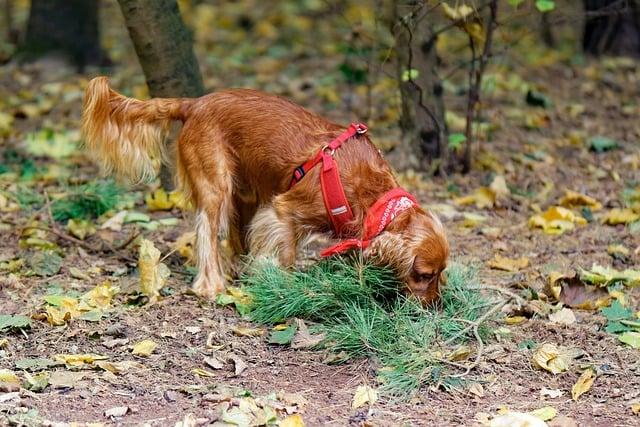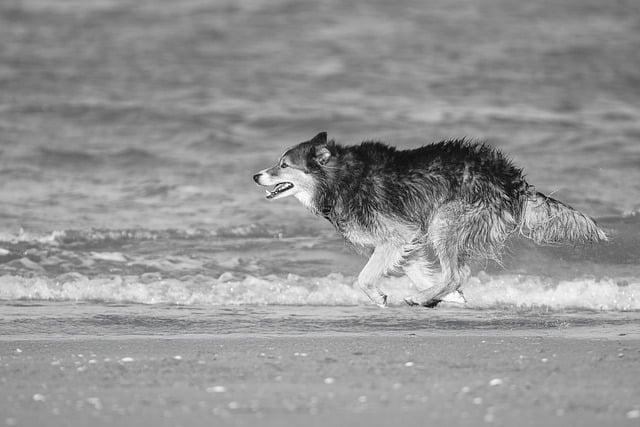When Sarah adopted Max, a spirited rescue dog, she was thrilled—until his aggressive behavior surfaced. Barking at strangers and lunging at other dogs left her anxious and unsure. Determined to change his ways, she sought professional training. With patience and consistent techniques, Max transformed into a well-mannered companion. Sarah learned that aggression can be addressed with the right approach. If you’re facing similar challenges, remember: with dedication and expert guidance, you can train your dog to be calm and confident.
Contents
- Understanding the Roots of Aggression in Dogs
- Effective Training Techniques to Mitigate Aggressive Behavior
- The Importance of Socialization in Preventing Aggression
- Building a Strong Bond: Trust and Communication in Dog Training
- Q&A
Understanding the Roots of Aggression in Dogs
To effectively address aggression in dogs, it is crucial to first understand its underlying causes. Aggression can stem from a variety of factors, including **fear**, **territorial instincts**, and **frustration**. Recognizing these roots allows dog owners to tailor their training approaches, ensuring that they address the specific triggers that lead to aggressive behavior.
One of the most common reasons for aggression is fear. Dogs that feel threatened may resort to aggressive behaviors as a means of self-defense. This can manifest in situations where a dog perceives a threat from other animals or unfamiliar humans. Identifying signs of fear, such as cowering or growling, can help owners intervene early and implement strategies to build their dog’s confidence through positive reinforcement and gradual exposure to feared stimuli.
Territorial aggression is another significant factor. Many dogs instinctively protect their home and family, leading to aggressive responses when they perceive intruders. This behavior can be managed by establishing clear boundaries and teaching commands that promote calmness. Owners can also work on desensitizing their dogs to visitors, helping them learn that not all newcomers are threats.
Frustration can also trigger aggressive behavior, particularly in dogs that are not adequately exercised or mentally stimulated. Boredom can lead to pent-up energy, resulting in outbursts of aggression. To combat this, owners should ensure their dogs receive regular physical activity and engage in interactive play. Activities like agility training or puzzle toys can provide mental stimulation, reducing the likelihood of frustration-induced aggression and fostering a more balanced temperament.
Effective Training Techniques to Mitigate Aggressive Behavior
When addressing aggressive behavior in dogs, it’s crucial to implement training techniques that foster a positive environment. **Positive reinforcement** is one of the most effective methods. This approach involves rewarding your dog for good behavior rather than punishing them for bad behavior. By using treats, praise, or playtime as incentives, you can encourage your dog to associate desirable actions with positive outcomes. This not only builds trust but also motivates your dog to repeat those behaviors.
Another valuable technique is **desensitization**. This method involves gradually exposing your dog to the stimuli that trigger their aggression in a controlled manner. Start at a distance where your dog feels safe and gradually decrease that distance over time, rewarding calm behavior along the way. This process helps your dog learn to remain relaxed in situations that previously caused them to react aggressively, ultimately leading to a more balanced demeanor.
Incorporating **socialization** into your training regimen is also essential. Exposing your dog to various environments, people, and other animals can significantly reduce fear-based aggression. Arrange controlled playdates with well-behaved dogs or take your dog to puppy classes. The key is to ensure these interactions are positive and supervised, allowing your dog to learn appropriate social cues and behaviors in a safe setting.
Lastly, consider the importance of **consistent training**. Establishing a routine helps your dog understand what is expected of them. Use clear commands and maintain a calm demeanor during training sessions. Consistency in your approach reinforces learning and helps your dog feel secure. Remember, patience is vital; behavioral changes take time, and with dedication and the right techniques, you can guide your dog towards a more peaceful and less aggressive disposition.
The Importance of Socialization in Preventing Aggression
Socialization is a critical component in shaping a dog’s behavior and temperament. By exposing your dog to a variety of environments, people, and other animals from a young age, you can significantly reduce the likelihood of aggressive tendencies developing. This process helps your dog learn how to interact appropriately, understand social cues, and build confidence in different situations.
When dogs are not adequately socialized, they may become fearful or anxious in unfamiliar settings, leading to defensive behaviors that can manifest as aggression. **Positive experiences** during socialization can help your dog associate new encounters with safety and enjoyment. This proactive approach can prevent the development of fear-based aggression, which is often rooted in insecurity and lack of exposure.
Engaging in regular socialization activities can also enhance your dog’s ability to communicate effectively with other dogs and humans. This includes learning to read body language and understanding the signals that indicate when play is appropriate or when to back off. By fostering these skills, you create a more balanced and well-adjusted pet that is less likely to react aggressively in stressful situations.
To ensure effective socialization, consider incorporating the following strategies into your routine:
- **Enroll in puppy classes** to expose your dog to other dogs and people in a controlled environment.
- **Organize playdates** with other friendly dogs to encourage positive interactions.
- **Visit dog parks** or community events to introduce your dog to new experiences.
- **Expose your dog to various environments**, such as busy streets, parks, and pet-friendly stores.
By prioritizing socialization, you not only enhance your dog’s quality of life but also take significant steps toward preventing aggression. A well-socialized dog is a happy dog, and this happiness translates into a more harmonious relationship between you and your furry companion.
Building a Strong Bond: Trust and Communication in Dog Training
Establishing a solid foundation of trust and communication is essential when addressing aggressive behavior in dogs. Dogs, like humans, thrive in environments where they feel safe and understood. By fostering a trusting relationship, you create a space where your dog is more likely to respond positively to training. This bond allows for open lines of communication, enabling you to convey your expectations clearly and effectively.
Effective communication goes beyond mere commands; it involves understanding your dog’s body language and emotional state. Recognizing signs of stress or discomfort can help you adjust your training approach accordingly. Consider the following strategies to enhance your communication:
- Use consistent cues: Employ the same verbal commands and hand signals to avoid confusion.
- Be patient: Allow your dog time to process information and respond.
- Reinforce positive behavior: Use treats and praise to reward desired actions, reinforcing the bond between you.
Building trust also means being mindful of your dog’s past experiences. If your dog has a history of aggression, it’s crucial to approach training with empathy and understanding. Gradually desensitize your dog to triggers that may provoke aggressive responses, ensuring that each interaction is positive. This process can be facilitated by:
- Creating a safe space: Designate an area where your dog feels secure and can retreat when overwhelmed.
- Introducing controlled exposure: Slowly expose your dog to situations that may trigger aggression, rewarding calm behavior.
- Seeking professional help: Consider enlisting the support of a certified dog trainer or behaviorist for tailored guidance.
Ultimately, the journey to reducing aggression in your dog hinges on the strength of your relationship. By prioritizing trust and communication, you empower your dog to learn and adapt in a supportive environment. Remember, the goal is not just to eliminate aggressive behavior but to cultivate a harmonious partnership built on mutual respect and understanding.
Q&A
-
Can all dogs be trained to not be aggressive?
Yes, most dogs can be trained to reduce or eliminate aggressive behaviors. With the right techniques, patience, and consistency, you can help your dog learn appropriate responses to various situations.
-
What training methods are effective for reducing aggression?
Positive reinforcement is one of the most effective methods. This involves rewarding your dog for calm behavior and redirecting aggressive tendencies through training exercises, socialization, and desensitization.
-
How long does it take to train a dog to not be aggressive?
The duration of training varies based on the dog’s age, breed, and the severity of the aggression. Some dogs may show improvement within weeks, while others may require months of consistent training and socialization.
-
Should I seek professional help for my aggressive dog?
If your dog’s aggression is severe or poses a risk to others, it is highly advisable to consult a professional dog trainer or behaviorist. They can provide tailored strategies and support to ensure safe and effective training.
with patience, consistency, and the right training techniques, you can transform your dog’s behavior. Don’t hesitate to seek professional help if needed. A well-trained dog leads to a safer, happier environment for everyone. Start today!

大家好,我是彼得潘,專業的手法身體治療師。我喜歡探索和研究各種主題,並透過與人工智慧的合作分享專業、實用、有趣的文章。我們定期進行人工審核,以確保內容的準確性。如果您發現文章中有任何不準確的地方,請隨時與我們聯繫,我們會及時糾正。您可以透過 [email protected] 與我們聯繫。



